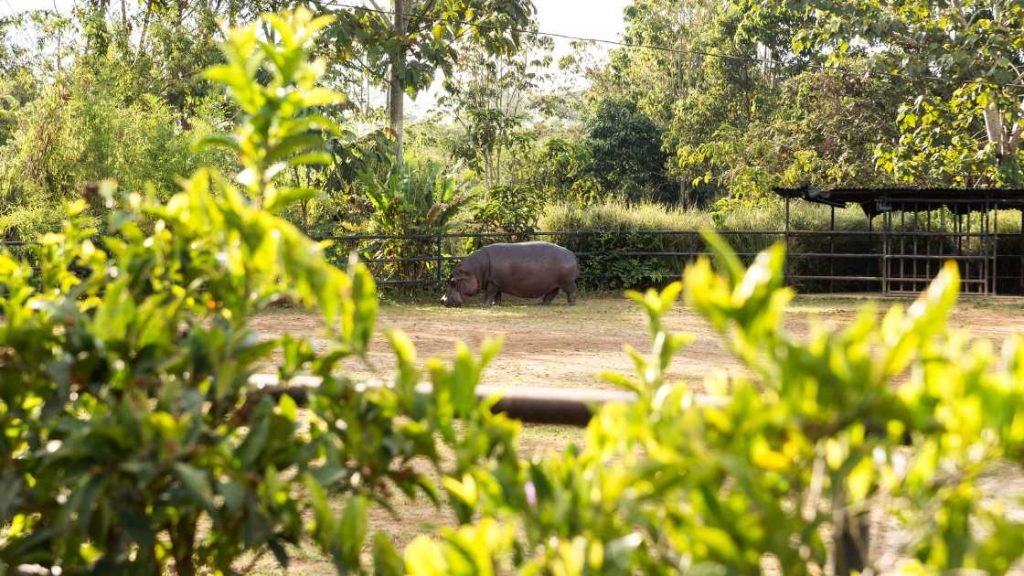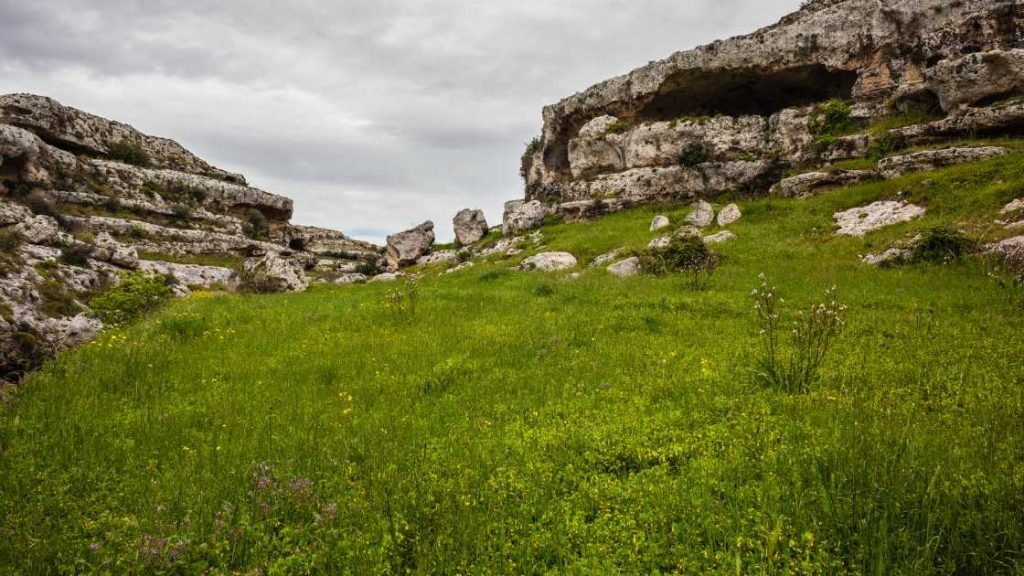No, you cannot live permanently in National Parks. These protected areas are not zoned for residential living.
National Parks are treasured for their breathtaking natural beauty and cultural significance, drawing millions of visitors yearly.
They serve as a sanctuary for diverse wildlife and offer a space for recreational activities and environmental education.
While the prospect of living amid such splendor might be alluring, permanent residency is off-limits to preserve the parks’ pristine condition.
However, if you’re wondering, ‘Can you live in National Parks?’ the answer is no. You can, however, enjoy extended visits through camping, lodging, and seasonal volunteering or working opportunities. Which allows for immersive experiences without disturbing the ecological balance.
National Parks strive to preserve ecosystems for future generations through sustainable tourism and environmental stewardship.
Table of Contents
ToggleThe Allure Of National Parks
The Allure of National Parks beckons adventurers, nature enthusiasts, and those yearning to unplug from the bustling world.
These natural sanctuaries are not just breathtaking landscapes; they embody the very essence of serenity and wonder.
Natural Wonders And Wildlife

National parks offer a gateway to some of the world’s most stunning natural sites.
From towering mountains and glistening glaciers to vast canyons and roaring waterfalls, these landscapes inspire awe.
The parks protect diverse ecosystems where wildlife flourishes. Visitors might glimpse:
- Bears foraging in the woods
- Majestic eagles soaring high
- Elk herds moving across valleys
Snapshots of these moments become cherished memories. They remind us of our connection to the Earth.
Cultural Significance And Preservation
National parks do more than safeguard natural beauty. They preserve pieces of human history and culture.
Indigenous sites, historic battlefields, and ancient ruins rest in these protected lands. They tell stories of our past and are:
- Windows into ancestral wisdom
- Evidence of historic events
- Examples of architectural marvels
By visiting these sites, we honor their significance and ensure their tales continue to be told.
Legal Framework Governing Residency
Exploring the idea of living amidst nature’s beauty often leads to a crucial question: Can you live in National Parks?
The answer weaves through a complex legal framework designed to balance conservation efforts with public use.
To understand the legality of residency within these treasured landscapes, a deep dive into park regulations and federal laws is essential. Wondering about the rules for bringing your own food to the zoo? Check out our guide.
Park Regulations And Protections
National Parks are protected areas with specific rules to preserve their natural state. Residency directly in these parks typically falls under strict limitations.
The National Park Service (NPS) sets out these rules to ensure wildlife and habitats remain undisturbed.
- Permanent living arrangements are generally prohibited.
- Short-term stays, like camping, have a limited duration.
- Parks may offer seasonal housing to staff or researchers.
- Existing private inholdings may allow for special cases, often grand-fathered rights.
NPS guidelines highlight the importance of these protections for sustaining the beauty and integrity of parks for future generations.
Federal Oversight And Laws

The governance of National Parks extends beyond park borders. The United States establishes federal laws to oversee the entire network of National Parks. These include the National Park Service Organic Act and the Wilderness Act.
- The Organic Act mandates conservation and restricts activities that impair park values.
- The Wilderness Act protects designated wilderness areas from development.
- Environmental assessments must precede any potential residential plans.
- Land acquisition policies often prevent private residential expansion within park boundaries.
These federal laws create a unified approach to guarding our national heritage. Residency options, thus, become a matter of meticulous adherence to established legal structures.
In summary, while the dream of living in a National Park can be enchanting, the reality is bound by a network of protections and laws ensuring the preservation of these national treasures.
Historical Dwellings Within Park Boundaries
Imagine stepping back in time, walking the same trails that ancient civilizations once roamed.
National parks often protect not just natural wonders, but also the historic homes where early settlers and native tribes lived.
Let’s travel through the past and explore these historical footprints preserved within park boundaries.
Early Settlers And Native Tribes
Our journey begins with whispers of history echoing through the old dwellings deep within the parks. National parks serve as time capsules.
It contains ancient homes carved into rock faces, old wooden cabins, and remnants of civilizations long gone.
These sites offer a peek into lives lived in harmony with nature and showcase the ingenuity of those who called these lands home.
- Ancient cliff dwellings
- Historic homesteads and cabins
- Ruins of tribal communities
Historical Land Claims And Grandfathered Properties

In some parks, you might find properties that are exceptions to the rules. Certain homes and lands, owned by families for generations, fall under “grandfathered” rights.
These unique scenarios allow for habitation within the parks, as they predate the parks’ establishment.
These claims reflect the complex relationship between the preservation of natural beauty and human habitation.
| Park Name | Type of Dwelling | Historical Significance |
|---|---|---|
| Yosemite National Park | Grandfathered family homes | 19th-century land claims |
| Mesa Verde National Park | Ancient Puebloan cliff dwellings | Home to ancestral Puebloans from AD 600 to 1300 |
Note: Living in these dwellings is rare and usually not an option for the general public. These spaces enlighten visitors on how life harmonizes with nature’s rhythms.
Park regulations ensure their preservation for future generations to learn from and appreciate.
Contemporary Living Scenarios
National Parks unveil myriad living options for individuals deeply connected with these treasured landscapes.
Imagine waking up to the euphonic chirping of birds and breathing in the pristine mountain air. This dream can become a daily reality for certain groups of people.
These contemporary living scenarios range from park employees to leaseholders, each with their unique involvement in park stewardship.
Park Employees And Researchers
Park employees and researchers have a special privilege. They experience park life firsthand. Their roles are vital for park operations and conservation efforts. Here’s how they live within these majestic spaces:
- Park Rangers: Inhabit government-provided housing.
- Scientists: Occupy research stations for extended periods.
- Maintenance Crews: Stay in seasonal accommodations.
All these roles contribute to an enriched park experience and ensure visitor safety and resource preservation.
Their living arrangements are designed to minimize environmental impact while maximizing their ability to serve the park and its visitors.
Leaseholders And Concessionaire Staff
Leaseholders and concessionaire staff form the backbone of visitor services within many National Parks.
From lodges to general stores, they enhance guest experiences. Their living conditions are outlined below:
| Role | Lodging Type |
|---|---|
| Leaseholders | Leased property within park bounds |
| Concessionaire Staff | Staff housing or nearby accommodations |
These individuals maintain a close-knit connection with the National Parks, allowing them to immerse fully in the park’s culture and serve its visitors with genuine passion.
Challenges Of National Park Residency
Imagine waking up to the sound of birds and breathing in fresh air every morning. It sounds ideal, but living in a national park brings its own set of challenges.
Park residency can be complicated. From limited access to necessities to a commitment to protect the environment. Let’s explore the challenges that residents might face.
Access To Amenities And Services
In national parks, the usual comforts of city life are often far away. Stores, medical facilities, and schools can be hard to reach. Here are some crucial services that might be affected:
- Groceries: Supermarkets are often not nearby, adding hours to your shopping trip.
- Healthcare: In case of emergencies, the nearest hospital could be miles away.
- Education: Schools may be distant, posing issues for families with children.
- Connectivity: Internet and cell service can be spotty, disrupting communication.
Environmental Impact And Stewardship

As a resident of a national park, protecting the ecosystem becomes part of your daily life. Residents must minimize their environmental impact. It’s crucial to be mindful of:
| Aspect | Importance |
|---|---|
| Waste Management | Properly disposing of trash preserves the park’s natural beauty. |
| Water Use | Conserving water protects the local wildlife and plants. |
| Energy Conservation | Using renewable resources helps maintain the park’s environment. |
| Land Use | Building responsibly ensures the park remains undisturbed. |
Living in a national park means adapting to limitations and taking on the role of a steward. It’s a unique lifestyle that requires commitment and a dedication to preservation.
Life In Remote Locations
Living remotely, particularly in a National Park, is a unique experience. Imagine waking up to a serene sunrise and the sound of nature’s alarm. No city chaos, just peace. You live where others vacation. Yet, such beauty comes with its challenges.
Self-sufficiency And Preparedness
Self-sufficiency is a must in the wilderness. Regular services are a rarity. Your home? It needs to be your supermarket, your power station, and sometimes, your medical clinic. Let’s break down the necessities:
- Food and Water: Stock up on preserves and water filters.
- Energy: Solar panels or generators keep lights on.
- First Aid: A comprehensive first aid kit is vital.
- Maintenance Skills: Learn to fix and build as needed.
Embrace the DIY attitude. Your survival may depend on it.
Community Dynamics
The community fabric in isolated places is strong. Neighbors are not just friends but lifelines. Small numbers mean every person counts. Attend local events. Help in emergencies. Exchange skills and supplies. Here’s what bonds the community:
| Aspect | Importance |
|---|---|
| Trust | It’s the glue that holds everyone together. |
| Cooperation | Many hands make light work. |
| Communication | Knowing your neighbors can save lives. |
The right community turns survival into thriving.
Real Estate And Ownership Issues
Exploring the concept of living within the boundless beauty of national parks sparks a discussion on Real Estate and Ownership Issues. These areas are protected and governed by strict regulations. This means owning a piece of land here isn’t as straightforward as one might think.
Let’s dive into the complexities of property rights and the hurdles faced when buying or selling property in these treasured landscapes.
Property Rights And Restrictions
Ownership in national parks comes with a unique set of challenges. The government designates these lands primarily for public enjoyment and conservation. This results in severe limitations on private ownership.
In some rare cases, properties within park boundaries existed before the park’s establishment. These hold different rules. Here are key points about property rights in national parks:
- Existing Property: Some properties might be ‘grandfathered’ into new park areas.
- Conservation Easements: These can restrict development rights while allowing ownership.
- Leaseholds: Occasionally, the government may lease land for private use.
Buying And Selling Challenges
Engaging in real estate transactions within national parks is not common. Several hurdles can complicate the process. The rarity of properties and stringent regulations make each transaction unique. Consider these obstacles:
| Challenge | Description |
|---|---|
| Permit Requirements | Special permits might be necessary to purchase property. |
| Limited Market | Few properties are available, leading to limited options. |
| Approval Processes | Transactions often require approval from park authorities. |
Alternative Solutions For Park Enthusiasts
Park enthusiasts often dream of living amid nature’s splendor within a National Park. While setting up a permanent residence in these protected areas isn’t possible, there are alternative solutions to immerse oneself in these magnificent landscapes.
From seasonal retreats to contributing hands-on through various programs, the right opportunity awaits every nature lover. Let’s explore how to stay connected to these cherished environments.
Seasonal Camping And RV Use
For those seeking a temporary escape to reconnect with nature, consider seasonal camping or RV living. Most parks offer camping sites with time limits to ensure everyone enjoys the experience.
- Choose a campsite: Research parks that offer long-term camping options.
- Check regulations: Stay informed about duration limits and required permits.
- Plan ahead: Book sites early as they often fill up quickly during peak seasons.
| Park Name | Stay Limit |
| Yosemite National Park | 14 Days |
| Zion National Park | 14 Days |
Volunteer Programs And Internships
Volunteering or securing an internship with the National Park Service is a fantastic way to live and learn in the parks. Many programs offer free lodging or RV hookups in exchange for work.
- Explore the National Park Service website for volunteer opportunities.
- Apply for internships that align with your skills and interests.
- Experience life in a park while contributing to its preservation.
Example Programs:
- Trail Maintenance Volunteer
- Visitor Center Intern
Impact Of Residency On Park Conservation
Exploring the idea of making your home inside a national park sparks a vital discussion on conservation. Parks stand as sanctuaries for wildlife and nature.
Living within these spaces means a close relationship with the delicate ecosystems. It is essential to look at how such residencies affect park conservation efforts. Do they harmonize or hinder?
Coexistence With Protected Ecosystems
Striking a balance between human presence and ecological integrity is critical. Residency in national parks must follow strict regulations. Residences need to minimize their footprint. It involves:
- Using renewable energy resources
- Restricting land alteration
- Reducing waste production
Residents play a role in monitoring wildlife and reporting on conservation needs. They often become key stewards, advocating for the protected landscape. Yet, the question remains: Does human presence tip the scales against wild habitats?
Future Of Residential Policies In National Parks
Policy evolution shapes the future of park residency. With increasing environmental awareness, park management reevaluates residential allowances. The future might see:
- Tighter restrictions on development
- Advanced sustainable housing technology requirements
- Greater integration of community-based conservation programs
Park agencies worldwide consider the effects of climate change and biodiversity loss. They assess how humans living in parks could affect long-term conservation goals. Ongoing research and conservation analysis will guide these policies for a sustainable coexistence. Will the parks remain open to residents, or will they shift to prioritize pure conservation? Time and policy will tell.
Frequently Asked Questions For Can You Live In National Parks
Do Any People Live In National Parks?
Yes, some national parks have residents, including staff, researchers, and sometimes indigenous communities. These individuals live within park boundaries under specific regulations.
Can You Live Off The Land In A National Park?
Living off the land in national parks is generally prohibited. Regulations preserve natural landscapes and protect wildlife, so such activities as hunting, foraging, and permanent settlement are not allowed. Visitors must follow park rules and leave no trace.
How Do People Have Homes In National Parks?
People can have homes in national parks if they acquired property before the park’s establishment or have special, often historical, arrangements. Certain parks do permit private residences through leasehold relationships or grandfathered property rights. Access to these homes typically adheres to strict regulations.
Can You Live In Yellowstone National Park?
Residential living is not permitted in Yellowstone National Park for the general public. Park employees and researchers may reside temporarily within its boundaries. Visitors can stay short-term at designated campsites and lodges.
Conclusion
Living within national parks is more dream than reality. Strict regulations are in place to protect these natural treasures. Exceptions exist for certain employees, but permanent residency is off-limits. Embrace the beauty on visits and hikes, but know home is elsewhere.
Remember, preserving wilderness is a collective responsibility for all.



